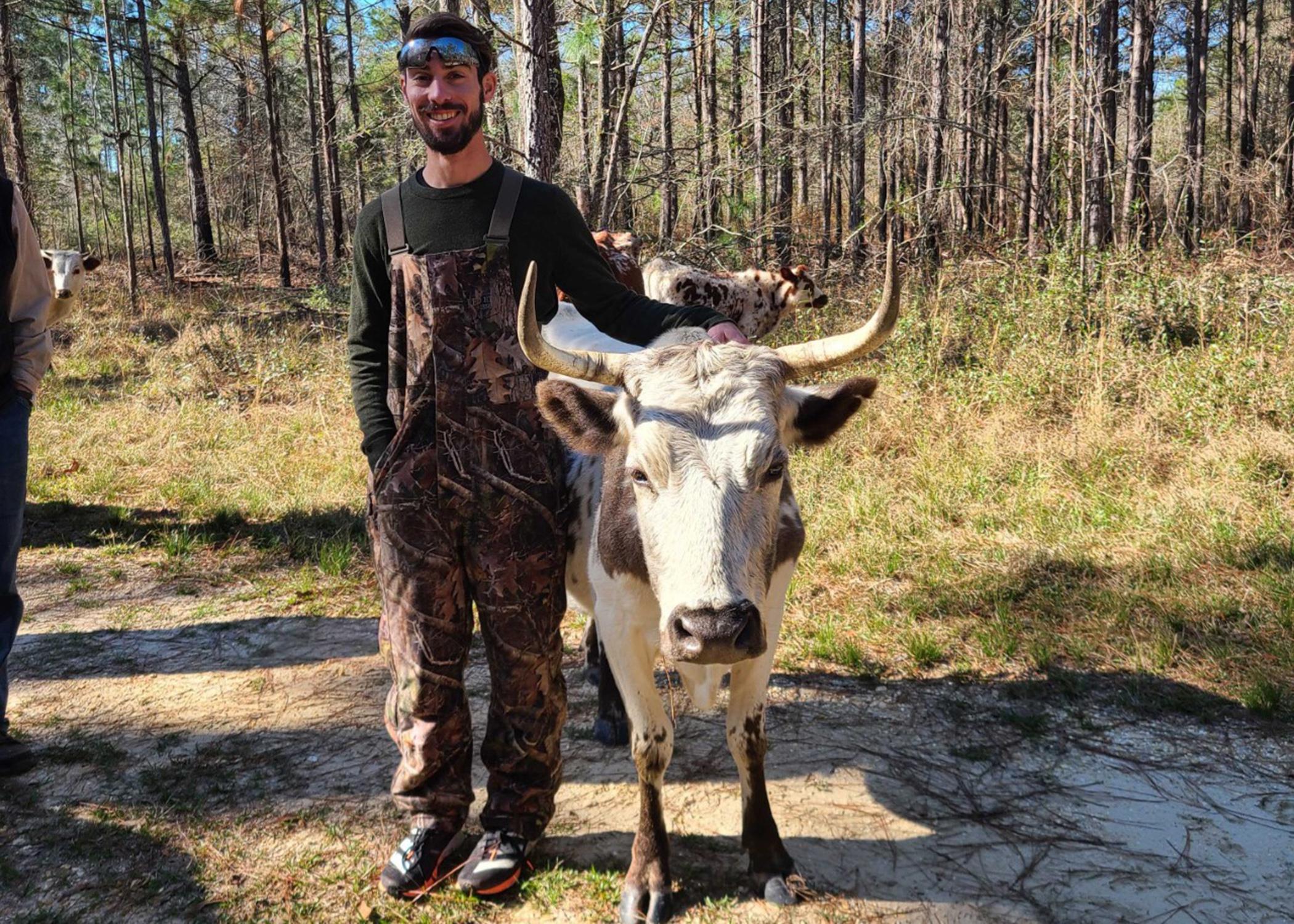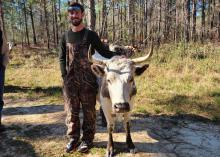Information Possibly Outdated
The information presented on this page was originally released on December 19, 2022. It may not be outdated, but please search our site for more current information. If you plan to quote or reference this information in a publication, please check with the Extension specialist or author before proceeding.
Targeted grazing in coastal uplands can remove invasive species
Coastal development compounded with the impacts of climate change are making natural resource managers struggle with restoring and managing coastal uplands due to the heavy front-end investment and need for continuous maintenance.
Some activities essential to management of coastal uplands for habitat benefits include clearing of thick woody underbrush and removal of invasive species. Common invasives found in coastal uplands locally include kudzu, Japanese climbing fern, Chinese tallow, Chinese privet and cogongrass.
Current habitat management techniques across coastal uplands include combinations of prescribed fire, chemical treatment and mechanical removal. Each is associated with different levels of costs, intrusiveness, ecological damage, logistical constraints and limitations that can be influenced by a changing climate.
Targeted grazing is a potential alternative and complementary technique involving the use of livestock and their grazing for habitat management and restoration. In other areas, targeted grazing has been recognized as one of the most cost-effective methods for habitat management, but also the method requiring the most management expertise. Cattle, goats and sheep are among the most common type of livestock used for targeted grazing.
Across the U.S. Gulf Coast, goats and cattle are known to clear dense areas of undergrowth and consume some of the common invasive species. Therefore, there is potential for livestock to play a role in local habitat management of coastal uplands and natural resource managers across the US Gulf Coast are interested. However, a current barrier to using targeted grazing on public lands is the lack of locally relevant research that could be used to inform grazing plans.
To determine the potential interest, research needs, logistical considerations and environmental concerns, a team led by the Mississippi State University Coastal Research and Extension Center developed a survey and sent it out to natural resource managers, livestock producers and other researchers throughout the U.S. Gulf Coast.
More than 95% natural resource managers indicated they would be interested in using livestock grazing as a habitat management practice, but very few were aware of any locally relevant research-based information that could inform grazing plans.
Specific research needs that were identified in the survey as high priority were a better understanding of the grazing intensity and duration needed to achieve habitat benefits and the potential impact of livestock at spreading invasive or non-target plant species.
The survey team is now working with partners across Texas, Mississippi, Alabama and Florida to help address these needs through applied research.
To learn more about survey data and future projects, feel free to contact me at Kac980@msstate.edu or Eric Sparks at Eric.sparks@msstate.edu. You can also visit https://coastal.msstate.edu/grazing.

Editor’s Note: Extension Outdoors is a column authored by several different experts in the Mississippi State University Extension Service.








